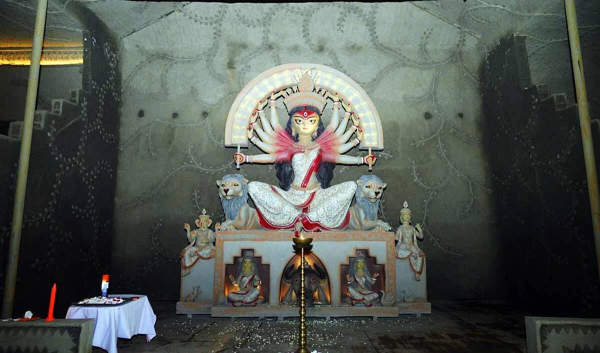
 Political Dynamics Intensify as Elections Approach
Political Dynamics Intensify as Elections Approach
With less than a year remaining until the West Bengal assembly elections, political tensions are escalating, and various channels are being utilized to convey political messages. The ruling Trinamool Congress (TMC) has launched a campaign focused on identity politics, which will be reflected in the themes of Durga Puja pandals across Kolkata and other regions of West Bengal this year. These pandals are expected to carry unusual yet highly political messages, opposing the alleged mistreatment of Bengalis in other states and the tendency to label them as 'Bangladeshi.' According to organizers, this trend is not merely about decorating for a religious festival but serves as a powerful display of Bengali identity, cultural heritage, and political consciousness.
Several pandal committees have chosen themes that emphasize the contributions of Bengali-speaking Indians, their historical significance, and cultural pride. Themes like 'Ami Bangla Bolchi' (I speak Bengali) directly connect to linguistic identity. Additionally, concepts such as the plight of refugees from partition, exile based on language, and Bengal's ancient history not only awaken collective memory but also provide historical context to current controversies. Through symbols like Rabindranath Tagore, Ishwar Chandra Vidyasagar, Raja Ram Mohan Roy, and filmmaker Ritwik Ghatak, the message conveyed is that Bengal's cultural identity is an integral part of India's collective heritage.
The ongoing debates surrounding the NRC in Assam and confrontations involving migrant workers in various states have made the issue of language-based identity particularly sensitive. Incorporating this issue into a globally recognized festival like Durga Puja clearly sends a political signal. The TMC has long engaged in politics surrounding Bengali identity and the 'outsider versus Bengali' narrative, and such themes could reinforce its narrative.
On the other hand, the BJP has promoted a narrative of 'national integration' and an 'anti-infiltration' policy in the state. However, these themes may lead to accusations that the party is ignoring discrimination against Bengalis. Meanwhile, opposition parties like the Left and Congress are framing this as a matter of 'culturalization versus politicization.' Chief Minister Mamata Banerjee has pointed out that in some parts of the country, residents must provide proof of their Indian citizenship, and those who speak Bengali are often labeled as 'foreigners.' She stated that if there are illegal immigrants, the central government should take action, and the state has no say in the matter. Banerjee questioned why Indian citizens should be sent to Bangladesh and highlighted that Bengali-speaking migrant workers are facing harassment regarding their citizenship, with some being pushed into Bangladesh despite having valid Indian identification.
In the context of the upcoming West Bengal assembly elections, these themes can function as a soft political campaign. Among urban voters, they may emotionally strengthen issues of Bengali pride and identity. In rural areas, where the challenges faced by migrant workers are more immediate, this could turn linguistic insecurity into a political issue. It may also create a discourse of state versus center, especially if the themes prominently depict 'atrocities against Bengalis in other states.'
The themes observed in this year's Durga Puja pandals will not merely be expressions of art or culture but will also serve as a platform for contemporary political discourse. It is evident that through the festival, a deeper political narrative is being woven, which may intensify as the election season approaches. It will be intriguing to see whether this cultural message influences voters or remains confined to cultural awareness.